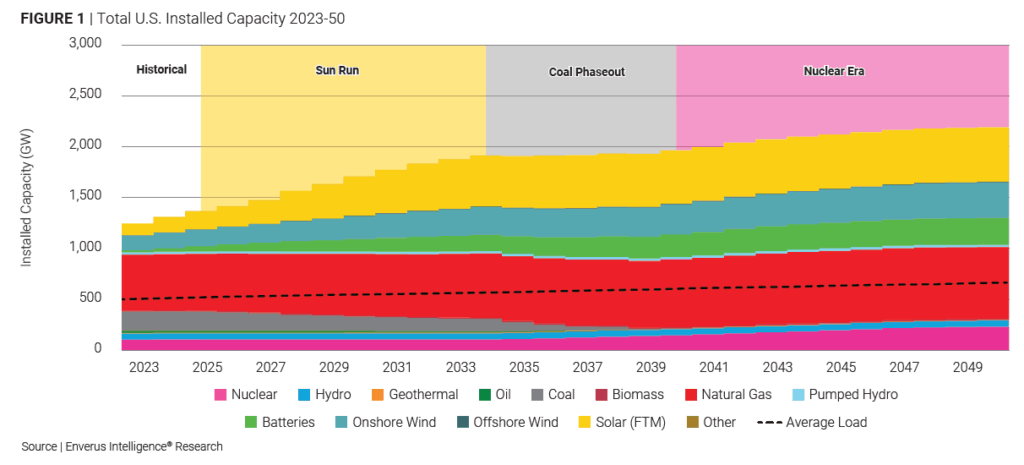
EIR report details coal’s exit, renewable energy trends,
and the future of U.S. electricity supply
CALGARY, Alberta (Nov. 18, 2025) Enverus Intelligence® Research (EIR), a subsidiary of Enverus, the most trusted energy-dedicated SaaS company that leverages generative AI across its solutions, is releasing its long-term U.S. power capacity expansion outlook, based on proprietary load forecasts, interconnection queue analytics and technology cost curves.
EIR projects a 57% increase in installed U.S. power capacity by 2050, driven by three distinct eras: rapid solar energy growth through 2028, a mid-term shift as coal-fired power is fully retired and replaced by natural gas and nuclear power, and steady long-term growth led by the ramp-up of the U.S. nuclear industry. Renewable energy installations are expected to peak in 2028 but remain competitive, supported by ongoing demand for power purchase agreements (PPAs) and low costs.
“Our analysis shows the U.S. grid is entering a transformative period, with solar installations surging in the near term and nuclear power taking a leading role in the decades ahead. The retirement of coal and the rise of new technologies will reshape regional generation mixes and drive innovation in grid reliability and energy sustainability,” said Juan Arteaga, PhD, principal analyst at EIR.
Key takeaways:
- Installed U.S. power capacity is forecast to grow 57% by 2050, with three eras: rapid solar energy growth (2025–2035), coal replacement (2035–2040) and steady nuclear expansion (2040–2050).
- Renewable energy installations will peak in 2028 but remain competitive as tax credits phase out, thanks to strong PPA demand and low costs.
- Coal-fired power is projected to be fully retired by 2040, replaced evenly by natural gas and nuclear power. The Midcontinent Independent System Operator (MISO) region will see over 25 GW of fuel switching.
- Wind energy, natural gas and nuclear power are the most load-sensitive technologies, with capacity buildout remaining relatively inelastic to changes in demand.
- Battery storage and gas peaker plants will play a crucial role in grid reliability, while combined-cycle natural gas and nuclear plants provide essential baseload support.

EIR’s analysis pulls from a variety of products including Enverus PRISM, Enverus FOUNDATIONS® – Power & Renewables and Enverus Instant Analyst™.
Share This:




 CDN NEWS |
CDN NEWS |  US NEWS
US NEWS 




























